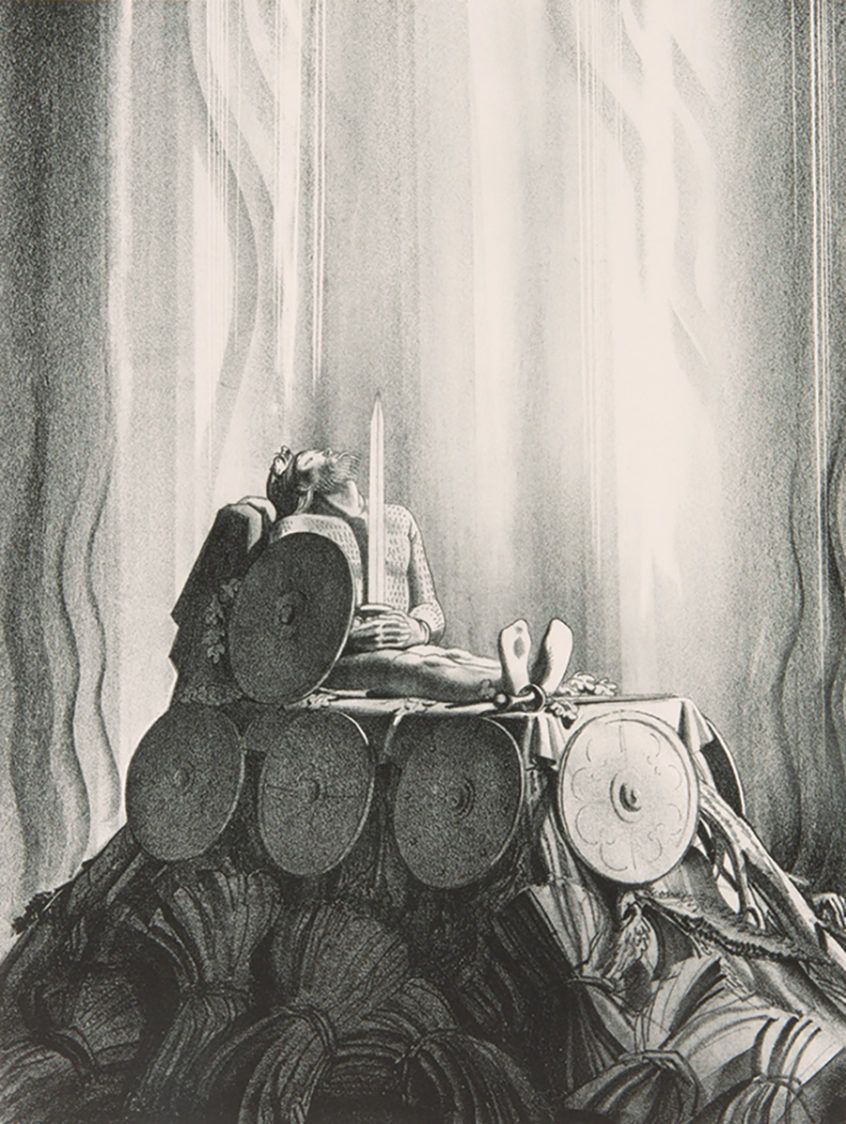
Funeral Pyre, by Rockwell Kent © Plattsburgh State Art Museum, State University of New York. Bequest of Sally Kent Gorton. Purchased with the Lola Downin Peck Fund from the Carl and Laura Zigrosser Collection, 1971
Sometimes I console myself with a vision of New York in ruins. Having been educated in the classical tradition, I prefer to imagine the desolation in the manner of Piranesi—blocks of stone overgrown with weeds, abandoned technology rusting in an autumnal wind. The vision is an anodyne of rage. It allows me to contemplate with equanimity the fatuousness of a society so content with so many smug assumptions and so willingly deceived by so many false promises. At moments of extreme depression, mercifully infrequent, I think of Johnny Carson and the discount department store as the two sublime expressions of the American Dream. For a man who succumbs to that kind of despairing metaphor, the prospect of nuclear holocaust does not seem so appalling. He assumes the survivors will begin again in a condition of Arcadian innocence. The Garden of Eden appears to be located on the other side of the bomb.
If the apocalyptic vision belonged only to me, I could wrap it up in plain brown paper, sneak it uptown to a psychoanalyst, and pay the going rate for exorcism on Park Avenue. Admittedly it is stupid, adolescent, fashionable, self-indulgent, moralistic, dangerous, and banal. Unfortunately it also belongs to a great many other people. It is a national phenomenon that presents itself in variations as diverse as a vote for George Wallace, a cocktail party for Huey P. Newton, a riot in Newark, and the seizure of a dean’s office by students armed with manifestos. It is the reservoir of unspecific anger from which demagogues draw the emotion necessary to irrigate their fields of mandragora.
The principal cause of the anger is a feeling of helplessness. Most people confront the machinery of society in its dehumanized extensions—in the blank faces of bailiffs, in the thin smiling of bank managers who subtract and foreclose. Apparently nobody can be blamed for anything. Thus the secret pleasure on the occasion of public disorder. I think of the exhilaration in New York City on the night the lights failed, of the delight in a transit strike, of the satisfaction in reading about losses on the stock market. Even those inconvenienced by disorder take pleasure in it. I encountered an extreme instance of this in a man who had been arrested for political demonstration and beaten by the police. The beating confirmed his view of the universe; having sustained no permanent injury, he rejoiced to find out that everything was just as bad as he had thought it was.
The longing for Armageddon depends on the illusion that genuine risk is no longer available. The soul yearns for adolescent pageants, for tropical beachheads and wagons moving across the plains; instead it finds itself hemmed in among high buildings, confined in boxes where all the action seems to take place on television. The difficulty has to do with an attitude toward death. In New York, death is an obscenity, the unmentionable thing we mask with the same euphemisms the Victorians employed to mask their horror of sex. Death is for suckers. Hospitals smuggle out the dead as if they were trafficking in government secrets. Thus the shock of the killings at Kent State. Such a thing was a tasteless violation of liberal conventions. A student going up against Soviet tanks in the streets wouldn’t be surprised if one of his friends was killed; the chance of death gave meaning to his act. But to American students, accustomed to dreamlike gestures, death cannot be imagined as something that happens to those they know.
For most people, the great Christian drama has ended, and all our players have vanished into thin air. Without death it is impossible to conceive of tragedy. Unable to agree upon a new play, we wait for spectacular revelations. Our impatience gives way to anger, and because we cannot accept the reality of death on a local scale, we begin to anticipate it on the scale of nuclear holocaust. This satisfies our craving for the stupendous. Our impoverished imaginations substitute Armageddon, which we know we possess the technology to accomplish, for the Day of Judgment, in which we lack the faith to believe.
From “The Longing for Armageddon,” which appeared in the August 1971 issue of Harper’s Magazine.






















































































